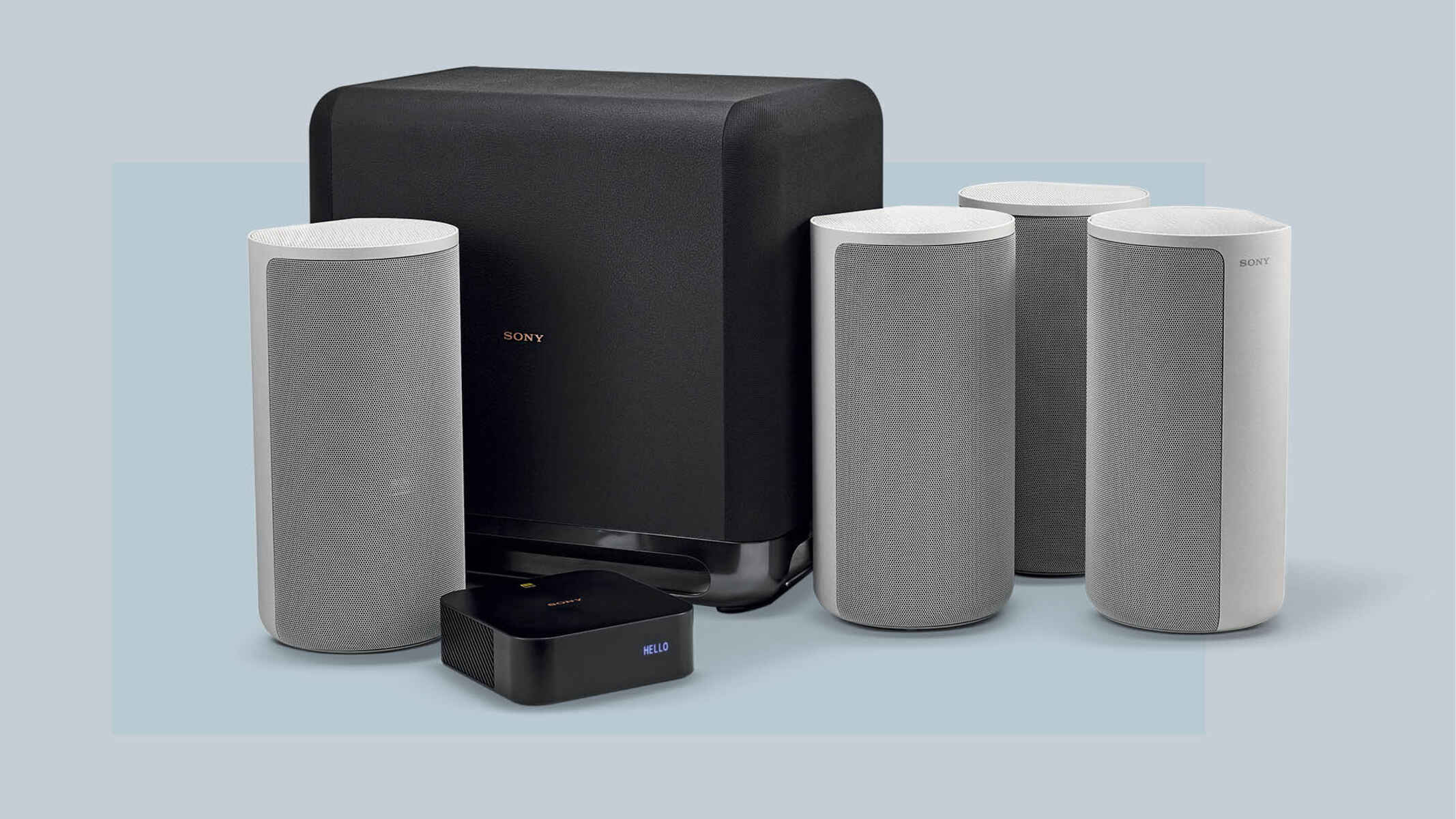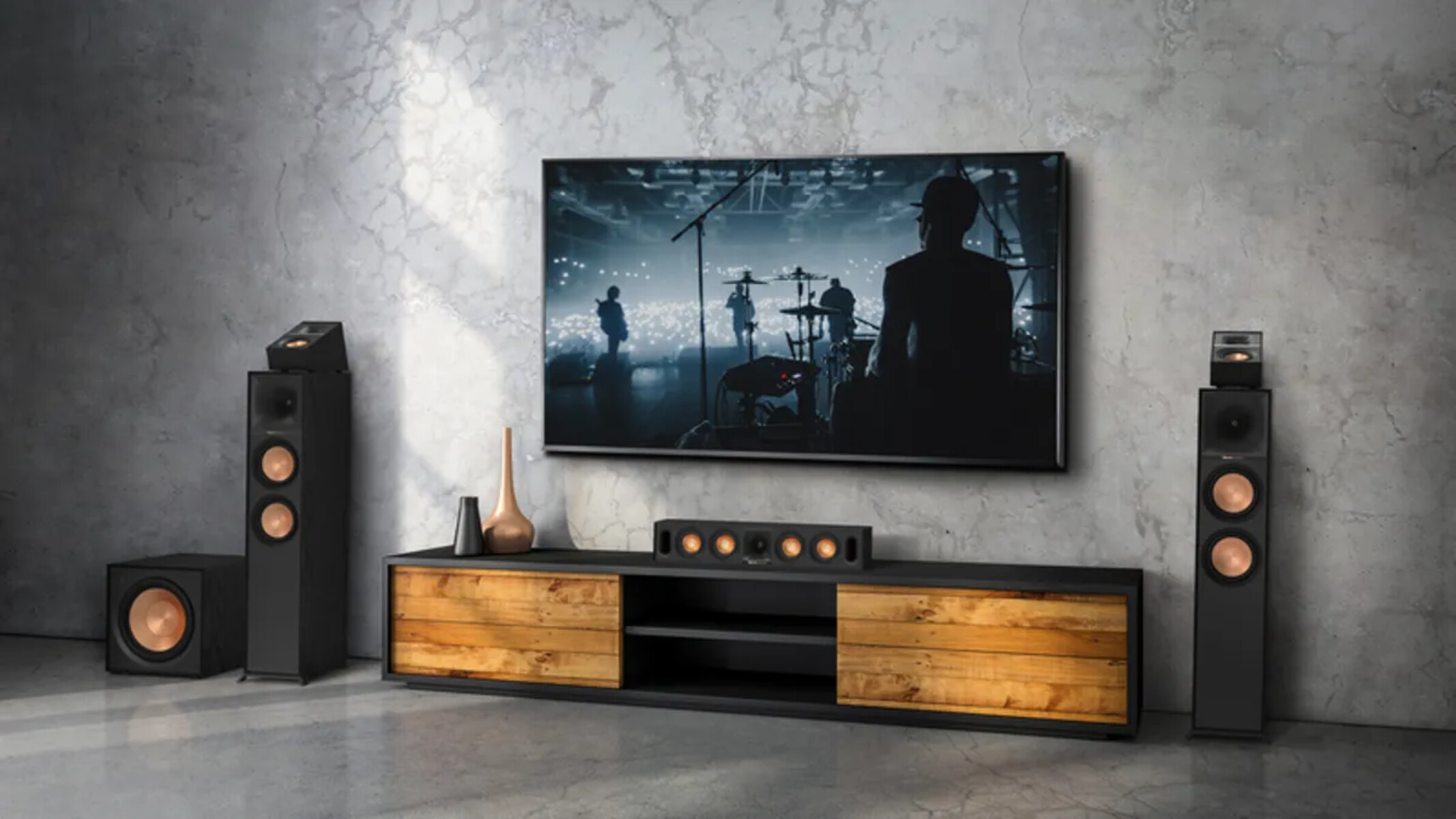Introduction
Welcome to the era of wireless audio technology! Gone are the days of cumbersome speaker wires and limited placement options. With the advent of Wi-Fi surround sound systems, you can now enjoy an immersive audio experience without the hassle of tangled cables.
Whether you’re a movie enthusiast, a gaming aficionado, or simply someone who appreciates high-quality audio, a Wi-Fi surround sound system is an excellent addition to your entertainment setup. But what exactly is a Wi-Fi surround sound system, and how does it work?
Unlike traditional wired systems, Wi-Fi surround sound systems use your home’s Wi-Fi network to connect the speakers and transmit audio signals. This eliminates the need for physical connections to each speaker and allows for greater flexibility in speaker placement. You can now position the speakers wherever you want in the room, without compromising on audio quality.
Additionally, Wi-Fi surround sound systems offer a range of advanced features and benefits that enhance your audio experience. These systems are compatible with various devices, including TVs, computers, and smartphones, allowing you to effortlessly stream music, movies, and games. The convenience and ease of use that Wi-Fi connectivity provides make it a popular choice among audio enthusiasts.
In this article, we’ll guide you through the process of setting up and using a Wi-Fi surround sound system. We’ll discuss how to connect your devices, adjust the sound settings, and troubleshoot common issues that may arise. By the end of this article, you’ll have all the knowledge you need to maximize your surround sound experience.
So, grab your favorite movie or game, sit back, and prepare to be immersed in a whole new level of audio bliss with your Wi-Fi surround sound system!
Benefits of Wi-Fi Surround Sound System
A Wi-Fi surround sound system offers a multitude of benefits that enhance your overall audio experience. Let’s take a closer look at the advantages of using this innovative technology:
1. Immersive Audio Experience: Wi-Fi surround sound systems provide a truly immersive audio experience, enveloping you in rich and detailed sound. With multiple speakers strategically placed around the room, you’ll feel like you’re right in the middle of the action, whether you’re watching a movie or playing a game.
2. Wireless Convenience: Say goodbye to tangled cables and restrictive speaker placement. Wi-Fi surround sound systems allow you to position speakers anywhere in the room, providing the freedom to create the perfect audio setup that suits your preferences. This wireless convenience not only adds aesthetic appeal but also saves you from the hassle of dealing with messy cords.
3. Seamless Integration: Wi-Fi surround sound systems seamlessly integrate with various devices, including TVs, gaming consoles, and smartphones. This means that you can easily connect and stream audio from your preferred sources without any additional wiring or devices. Whether you want to enjoy music from your smartphone or watch a movie on your smart TV, the integration capabilities of a Wi-Fi surround sound system make it a versatile and convenient choice.
4. Multi-room Audio: With some Wi-Fi surround sound systems, you can extend your audio experience to multiple rooms in your home. By connecting additional speakers throughout your house, you can enjoy synchronized audio in every corner, creating a cohesive and immersive atmosphere. This is ideal for parties or for simply moving between rooms while keeping the audio experience consistent.
5. High-Quality Sound: Wi-Fi surround sound systems are designed to deliver high-quality audio with excellent clarity and precision. The wireless connectivity ensures that there is minimal interference, resulting in a clean and uninterrupted sound experience. Whether you’re listening to music, watching movies, or playing games, you’ll appreciate the crisp and immersive sound that a Wi-Fi surround sound system provides.
6. Expandability: Wi-Fi surround sound systems offer the flexibility to expand and upgrade your audio setup in the future. As technology advances and new features become available, you can easily add more speakers or upgrade existing ones to stay up-to-date with the latest innovations in audio technology. This expandability ensures that your Wi-Fi surround sound system can adapt to your changing needs and preferences over time.
Overall, a Wi-Fi surround sound system elevates your audio experience to new heights. From the convenience of wireless connectivity to the immersive sound quality it provides, this innovative technology enhances your entertainment setup and allows you to truly immerse yourself in the audio content.
Setting up the Wi-Fi Surround Sound System
Setting up a Wi-Fi surround sound system may seem daunting at first, but with the right instructions, it can be a straightforward process. Here’s a step-by-step guide to help you get started:
- Select the Right Wi-Fi Surround Sound System: Begin by choosing a Wi-Fi surround sound system that suits your needs and budget. Consider factors such as the number of speakers, power output, and compatibility with your existing devices.
- Find the Ideal Speaker Placement: Determine the optimal placement for your speakers. The positioning will depend on the size and layout of your room. Ideally, the front speakers should be placed equidistant from the television, while the surround speakers should be positioned to the sides or behind the seating area for an immersive sound experience.
- Connect the Main Unit: Start by connecting the main unit to your television or audio source using an HDMI or optical cable. Follow the manufacturer’s instructions to ensure proper connection and compatibility with your specific setup.
- Power On the Speakers: Plug in each speaker to a power source and turn them on. Make sure they are within a reasonable distance from the router to ensure a stable Wi-Fi connection.
- Connect the Speakers to Wi-Fi: Most Wi-Fi surround sound systems come with a dedicated mobile app that helps you connect the speakers to your Wi-Fi network. Follow the app’s instructions to establish the connection. Alternatively, you may need to manually input your Wi-Fi network information using the control panel on each speaker.
- Synchronize the Speakers: Once connected to the Wi-Fi network, synchronize all the speakers using the app or control panel. This ensures that audio is transmitted to each speaker simultaneously, creating a cohesive surround sound experience.
- Test the Audio: Play a test video or audio clip to ensure that the sound is properly distributed across all speakers. Adjust the sound settings as needed to achieve the desired volume and balance.
- Fine-tune the Setup: Experiment with speaker placement and positioning to achieve the best sound quality. Some systems allow you to calibrate the sound based on your room’s acoustics, further enhancing the audio output.
Remember to refer to the manufacturer’s instructions provided with your specific Wi-Fi surround sound system for additional guidance. Each system may have its own unique setup process and additional features to explore.
Once you have completed the setup process, you are ready to embark on a thrilling audio journey with your new Wi-Fi surround sound system!
Connecting Devices to Wi-Fi Surround Sound System
Connecting your devices to a Wi-Fi surround sound system is a simple process that allows you to seamlessly stream audio from various sources. Follow these steps to connect your devices:
- Ensure Wi-Fi Connectivity: Make sure that your device, whether it’s a TV, gaming console, or smartphone, is connected to your home Wi-Fi network. This is essential for establishing a connection with your Wi-Fi surround sound system.
- Install the Required Apps: Some Wi-Fi surround sound systems require you to install a specific app on your device to enable wireless streaming. Check the manufacturer’s instructions for the recommended app and download it from the respective app store, if necessary.
- Launch the App: Open the app on your device and ensure that it is connected to the Wi-Fi network. Follow any setup prompts or login requirements specified by the app.
- Select the Device: Once the app is connected, it will search for available devices in your network. Select your Wi-Fi surround sound system from the list of available devices. The app may prompt you to enter the system’s unique identification code, which can usually be found on the main unit or in the product documentation.
- Browse and Stream Audio: Once your device is connected to the Wi-Fi surround sound system, you can browse through your favorite streaming apps or media library within the app. Choose the audio content you want to play and select the Wi-Fi surround sound system as the audio output. The sound will now be transmitted wirelessly to your speakers.
- Control Playback: Use the app on your device to control playback, adjust volume, or switch between different audio sources. Most apps offer intuitive controls and allow you to create playlists, customize audio settings, and explore additional features.
Remember that the exact steps and processes may vary depending on the Wi-Fi surround sound system and the devices you are connecting. For detailed instructions, refer to the user manual or online support resources provided by the manufacturer.
By connecting your devices to the Wi-Fi surround sound system, you can enjoy a seamless and wireless audio streaming experience, allowing you to optimize your entertainment setup with ease.
Adjusting the Sound Settings
Adjusting the sound settings of your Wi-Fi surround sound system allows you to personalize the audio experience and fine-tune it according to your preferences. Here are some key settings to consider:
1. Speaker Configuration: Start by checking the speaker configuration settings in your Wi-Fi surround sound system. You can specify the number and placement of speakers to ensure that the system correctly distributes the audio signals and optimizes the surround sound effect. This setting helps tailor the audio output based on your specific speaker setup.
2. Sound Modes: Many Wi-Fi surround sound systems offer different sound modes that enhance specific types of media, such as movies, music, or games. Experiment with these sound modes to find the one that best suits your preferences for each type of content. You may also have the option to customize and save your preferred sound settings for quick access.
3. Equalizer Settings: Adjusting the equalizer settings allows you to fine-tune the frequencies and balance of the audio output. You can boost or attenuate specific frequency ranges, such as bass or treble, to achieve the desired sound quality. Use trial and error, listening to various audio tracks, to find the equalizer settings that deliver the most pleasing and balanced sound for your ears.
4. Volume Levels: Ensure that the volume levels are set to a comfortable and enjoyable level. Most Wi-Fi surround sound systems allow you to control the volume levels of individual speakers or adjust the overall system volume. Take note of any recommended volume range provided by the manufacturer to avoid distortion or potential damage to the speakers.
5. Room Acoustics: Consider the acoustic properties of your room and make adjustments accordingly. Some Wi-Fi surround sound systems feature room calibration or optimization settings that analyze the room’s acoustics and apply specific corrections to enhance the audio experience. Follow the instructions provided by the system to properly calibrate the sound based on your room’s unique characteristics.
6. Dialogue Enhancements: If you often find it difficult to hear dialogue clearly, check for dialogue enhancement settings. These settings can improve the clarity and intelligibility of speech, making it easier to follow conversations in movies or TV shows. Adjust the settings to find the right balance between dialogue and other sound elements for a more enjoyable viewing experience.
Take the time to explore and experiment with the various sound settings available in your Wi-Fi surround sound system. Every audio setup is different, and adjusting these settings allows you to personalize the sound output to suit your particular preferences and optimize your audio enjoyment.
Maximizing the Surround Sound Experience
To truly maximize the surround sound experience with your Wi-Fi surround sound system, here are some tips and techniques to enhance your audio enjoyment:
1. Optimal Speaker Placement: Ensure that you have positioned your speakers correctly for optimal sound distribution. Follow the manufacturer’s guidelines and experiment with placement to achieve the desired surround sound effect. Consider using speaker stands or wall mounts for better positioning and stability.
2. Fine-tune Speaker Levels: Use the speaker level adjustment feature in your Wi-Fi surround sound system to balance the volume levels of each speaker. This ensures a smooth and seamless transition between channels and creates an immersive audio experience. Adjust the levels based on your listening position and personal preference.
3. Use Surround Sound Modes: Take advantage of the surround sound modes offered by your Wi-Fi surround sound system. These modes are designed to enhance specific types of content, such as action movies or live concerts, by utilizing the full capabilities of the surround sound system. Experiment with different modes to find the one that best suits the audio content you are enjoying.
4. Fine-tune EQ Settings: Adjust the equalizer settings to customize the audio output according to your preferences. Boost or attenuate specific frequencies to enhance specific elements of the sound, such as bass or treble. Fine-tuning the EQ settings allows you to create a personalized audio experience that suits your taste and ensures a balanced sound output.
5. Consider Acoustic Treatment: If you are dedicated to creating the ultimate surround sound experience, consider incorporating acoustic treatments in your room. This can involve adding sound-absorbing panels, bass traps, or diffusers to minimize unwanted reflections and resonances, resulting in a more accurate and immersive audio reproduction.
6. Explore Multi-room Audio: If your Wi-Fi surround sound system supports multi-room audio, take advantage of it to enjoy synchronized audio in multiple rooms. Extend the surround sound experience throughout your home by adding additional speakers to other areas. This allows you to create a cohesive audio environment, perfect for parties or immersive entertainment sessions.
7. Regular Maintenance: Ensure that your Wi-Fi surround sound system is properly maintained to preserve its performance. Keep the speakers clean and dust-free, check the cables and connections regularly, and update the system firmware when necessary. Regular maintenance helps ensure consistent and high-quality sound performance over time.
By following these tips and techniques, you can optimize the surround sound experience with your Wi-Fi surround sound system. Immerse yourself in the audio content and enjoy the rich, detailed sound that brings your movies, music, and games to life.
Troubleshooting Common Issues
While Wi-Fi surround sound systems offer a seamless audio experience, you may encounter some occasional issues. Here are some common problems you might encounter and their potential solutions:
1. Poor Wi-Fi Signal: If you experience dropouts or interruptions in the audio, the Wi-Fi signal strength may be weak. To remedy this, try moving the speakers closer to the Wi-Fi router or consider installing a Wi-Fi range extender to improve the signal coverage in the area.
2. Audio Sync Issues: Sometimes, you may notice a slight delay between the audio and video. This can be fixed by adjusting the audio delay settings in your Wi-Fi surround sound system. Refer to the system’s user manual or app settings to find the audio sync adjustment option and make the necessary changes.
3. Inconsistent Sound Levels: If you notice variations in sound levels between different speakers, check if the speaker levels are properly balanced. Go through the speaker calibration process again to ensure accurate volume levels for all speakers in your surround sound system.
4. Audio Dropouts or Distortions: If you experience audio dropouts or distortions, check for any interference sources such as other electronic devices operating on similar frequencies. Move any interfering devices away from your Wi-Fi surround sound system to minimize the impact on audio quality.
5. Device Connection Issues: If you have trouble connecting your devices to the Wi-Fi surround sound system, ensure that all devices are connected to the same Wi-Fi network. Double-check the network settings and passwords on each device to ensure they match.
6. Firmware Updates: Stay up-to-date with firmware updates for your Wi-Fi surround sound system. Manufacturers often release firmware updates to address bugs, improve performance, and introduce new features. Check the manufacturer’s website or the app for any available updates and follow the instructions to update your system’s firmware.
7. Resetting the System: If you’re still experiencing issues after trying the above troubleshooting steps, you may need to reset your Wi-Fi surround sound system to its factory settings. Consult the user manual or manufacturer’s support resources for detailed instructions on how to perform a system reset.
8. Contacting Customer Support: If all else fails, don’t hesitate to reach out to the manufacturer’s customer support. They can provide additional troubleshooting guidance specific to your device and assist you in resolving any persistent issues.
Remember, each Wi-Fi surround sound system may have its unique set of troubleshooting steps, so it’s essential to refer to the product’s documentation and support resources for specific guidance.
By troubleshooting common issues, you can ensure a smooth and uninterrupted audio experience, allowing you to fully enjoy the benefits of your Wi-Fi surround sound system.
Conclusion
Wi-Fi surround sound systems have revolutionized the way we experience audio, providing a seamless and immersive entertainment experience. With their wireless connectivity, advanced features, and flexibility in speaker placement, these systems offer an unparalleled level of convenience and audio quality.
In this article, we explored the benefits of Wi-Fi surround sound systems, including their ability to create an immersive audio experience, wireless convenience, seamless integration with various devices, and expandability for future upgrades. We also provided step-by-step instructions for setting up and connecting devices to a Wi-Fi surround sound system, adjusting sound settings, maximizing the surround sound experience, and troubleshooting common issues.
By following these guidelines, you can optimize your audio setup and unlock the full potential of your Wi-Fi surround sound system. Whether you’re watching movies, playing games, or listening to music, the immersive sound will transport you into a world of audio bliss.
Remember to refer to the user manual and support resources provided by the manufacturer for specific instructions and troubleshooting guidance. And don’t hesitate to reach out to customer support if you encounter any persistent issues or need additional assistance.
Now, armed with this knowledge, go ahead and elevate your audio entertainment by embracing the power of Wi-Fi surround sound systems. Get ready for an incredible auditory journey full of immersive soundscapes and thrilling experiences that will enhance your enjoyment of movies, music, and games like never before.

























